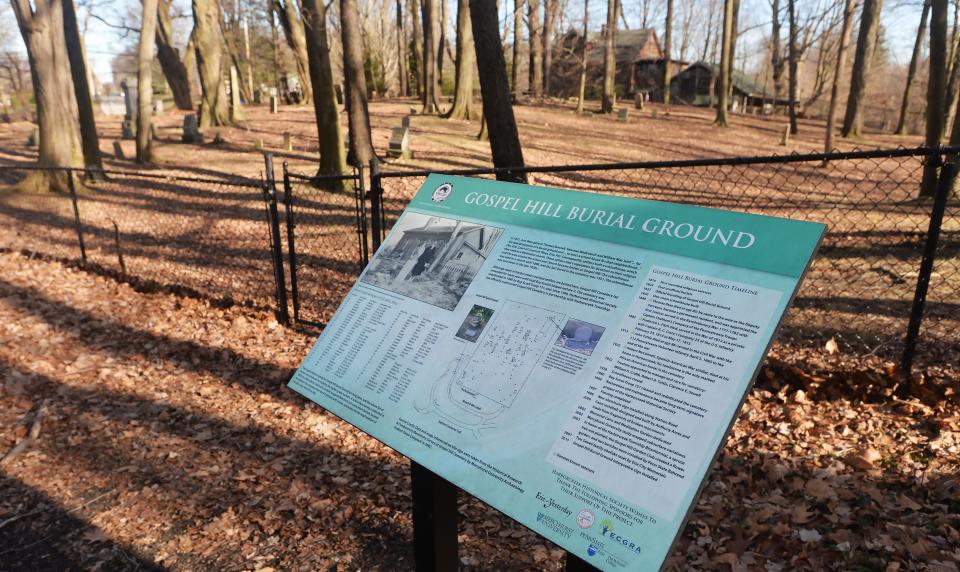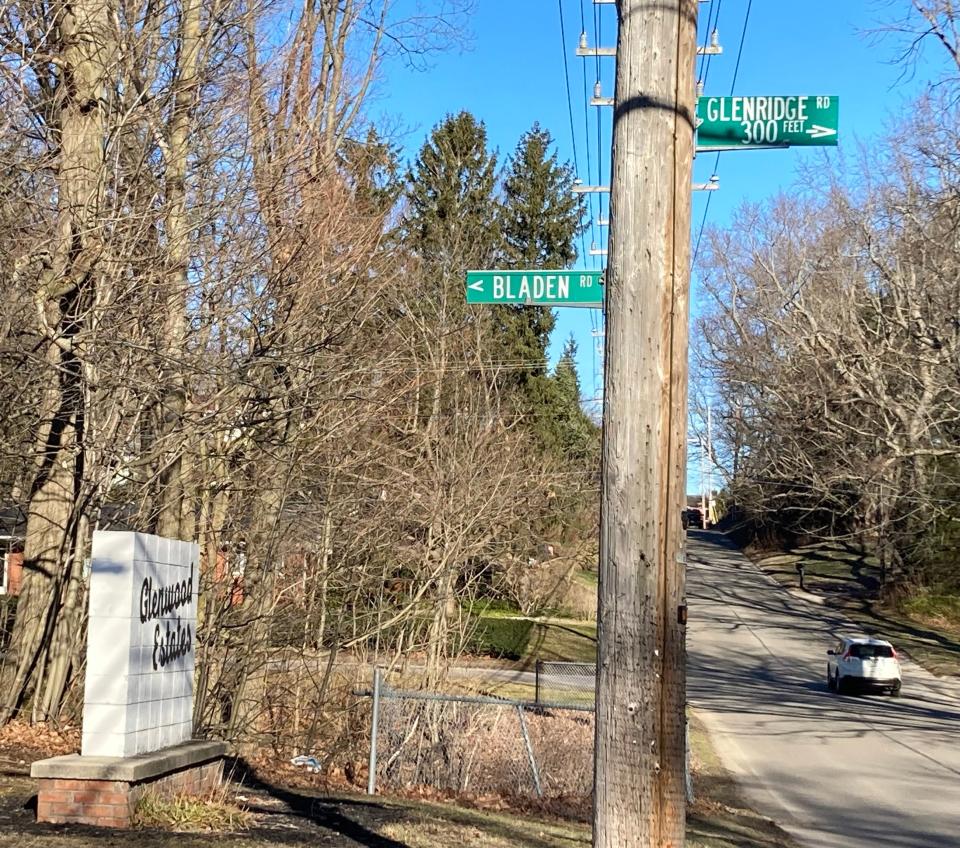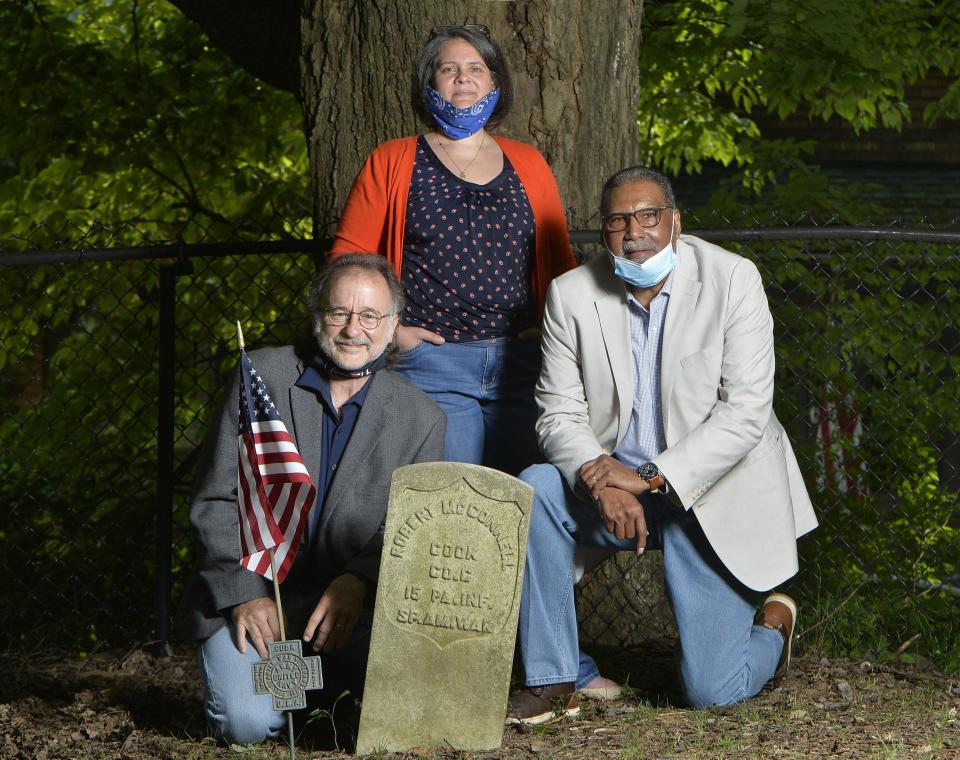The truth about slavery in Erie County in the 19th century
Grubb, Hamot, Moorhead, Kelso and Reed were prominent early Erie residents remembered today in street, business and neighborhood names.
They also were enslavers, growing crops, building businesses and managing their households through the labor of men, women and children they had purchased and brought to Erie in bondage.
Slavery was legal in early Erie — and in every colony and later every state in America — though that history has been largely forgotten.

"The history of slavery in Erie and in this country needs to be known. I can't even imagine why people would want to hide the truth, as it's been hidden for 400 or 500 years — the truth about how people of color have been treated in this county," said Gary Horton, president of the Erie chapter of the NAACP.
"Slavery wasn't pretty. It wasn't fun. It did not benefit people of color."
Pennsylvania had begun to outlaw slavery before Erie's first permanent settlers arrived in the 1790s. A March 1, 1780, law abolished slavery in the state, but only gradually. People already enslaved on that date remained enslaved for life. Their children born afterward were enslaved until age 28 and legally could be bought and sold until then.
"For Sale, the unexpired term of servitude of a Coloured Woman," read a May 31, 1827, advertisement in the Erie Observer. "She ... has about four years to serve."
In 1790, there were 3,737 people enslaved in Pennsylvania, according to the U.S. Census. It wasn't until the 1850 census that no one in Pennsylvania was legally considered the property of another.
Buying people for £100 or 100 barrels of salt
Most of Erie's early Black residents were "brought in as slaves, some of the most respectable families having been owners of this kind of property," according to "Nelson's Biographical Dictionary and Historical Reference Book of Erie County," published in 1896.

Those families included the families of surveyors sent to lay out tracts of land for purchase by settlers. Thomas Rees of the Pennsylvania Population Co. settled in 1795 in what today is Harborcreek Township with a household that included two enslaved children, Robert McConnell and James Titus, according to Nelson's history.
Another surveyor, Judah Colt, also enslaved workers.
John Grubb, a militia captain assigned to guard the surveyors, came from Lancaster County in 1795 and later settled here with at least four enslaved workers: Jack, a 25-year-old man bought for £100 (100 pounds sterling, the United Kingdom currency in use) in York County in 1798, and three women, Emma Howell, her mother and sister.
Grubb also brought Boe Bladen to Erie in the 1790s. The Guinea-born Bladen bought his freedom from Grubb, who later had a number of likely enslaved workers on his Millcreek farm.
Others known to have enslaved people:
Pierre Simon Vincent Hamot, a French-born businessman who came to Erie in 1805. Hamot held a number of enslaved workers and in 1825 advertised a "Six cents Reward" for the return of a 19-year-old runaway described as "a very bad character."
James Moorhead, a French and Indian Wars and Revolutionary War veteran. Moorhead brought an enslaved woman, Phoebe, and her son, Caesar Augustus, to Harborcreek in 1802.
General John Kelso, in charge of guarding the Erie frontier in the War of 1812. Kelso came to what now is Fairview Township in 1798 and several years later moved to Erie. His household included Charles Logan, "a colored man who lived and died in Erie," and Fira, an enslaved woman brought from Dauphin County. Charles Logan and Fira married and had three sons, who were each enslaved until age 28.
Rufus Reed owned a number of Erie businesses, including a tavern that he operated after his father's death in 1797. Reed also had at least one enslaved worker, the Logans' son, George, bought from Kelso for 100 barrels of salt.
John Cochran, a surveyor and later an Erie County judge, paid $200 for another Logan son, Bristo, in 1821.
There also were local apologists for slavery.
John Miller, in his "A Twentieth Century History of Erie County, Pennsylvania," published in 1909, described Bristo Logan's enslavement, "according to all accounts," as "unlike what real slavery is understood to be" and "of the mildest sort."
Working for freedom
Little is known of Erie's enslaved population.
Robert McConnell and James Titus were "probationary slaves," according to Nelson's history, and in time were freed, presumably when they reached age 28. Rees gave each 40 acres of land in Harborcreek's Gospel Hill area.

Titus later left Harborcreek. McConnell stayed on, and before his death in 1871 owned and farmed more than 240 acres along Station Road.
Modern descendants only learned of him from Karen James, who researched Black history for Erie's 1995 bicentennial, said WERG-90.5 FM radio personality Tim McConnell, who wonders if Robert McConnell might have been free when he came to Erie.
"Karen James told us she never found a bill of sale for him," Tim McConnell said. "And where did the name McConnell came from? All we know is that Robert McConnell came from Connecticut at age 4 and so would have been born in 1791."
Enslaved people generally were given the name of their enslaver. Thomas Rees may have bought the young Robert McConnell from an enslaver with that name.
Free or enslaved, Robert McConnell is an inspiration, said Mary Ellen McConnell-Watson, Tim McConnell's aunt.
"As far back as we could remember our family had always lived in Erie. And now we can say we probably are the oldest Black family in Erie," McConnell-Watson said.
"I am proud of Robert McConnell."
McConnell is believed to be buried at Gospel Hill Burial Ground, once Rees land, along with his great-grandson, also named Robert McConnell, according to Harborcreek Historical Society research.
Boe Bladen over time purchased more than 300 acres in Millcreek, where three generations of his family farmed. Bladen Park and Bladen Road, off Cherry Street, are named for the family.
George Logan, known as "Reed's George" during his enslavement, according to a Feb. 28, 1880, Erie Morning Dispatch report, was a teamster for Reed's distillery, mill, store and other businesses.
"George and his team were the power that moved anything he undertook," according to the Dispatch.
George Logan and his brother, Bristo, were listed among students at Himrod Mission from 1824 to 1826. The mission, described as a Sunday school for the city's Black residents, was operated by Erie abolitionist William Himrod.
Bristo Logan in later life owned and operated an ice cream business and lived in New Jerusalem, a neighborhood on Erie's west bayfront where Himrod had bought tracts of land that he made available to Black families and poor white people at low cost.
The Logans' mother, Fira Logan, "was famous as a cook and the reputation for hospitality that the Kelso home achieved was due to Fira's skill," according to Miller's 1909 history. Fira Logan in her final years lived with her son George.
Caesar Augustus, enslaved by the Moorhead family, was remembered by those who had "been carried to school through the deep snow on his back," according to a late 19th-century newspaper account.

Emma Howell, after she was freed, married James Ford, who had twice escaped enslavement. Howell and Ford operated a boarding house and Erie's first Underground Railroad station on 45 acres in northeast Erie, then part of Millcreek.
By 1884, enslavement in early Erie had been all but forgotten. A lawyer looking through old courthouse papers that year apparently was surprised to learn that John Kelso's son had been assessed for the enslaved Bristo Logan in 1825.
"It is not generally known that many Erie men previous to the abolition of slavery held negroes in bondage, and could dispose of them as a horse or any other piece of property," an Erie Morning Dispatch journalist wrote on Feb. 25, 1884, in reporting on the attorney's "discovery."
Enslavers who became abolitionists
At least two Erie enslavers later worked to abolish slavery nationally.
John Grubb, the militia commander, became an Erie County judge and "one of the earliest anti-slavery men of these parts," according to Miller's history.
In May 1840, Grubb presided at the trial of an allegedly enslaved fugitive from Kentucky apprehended by bounty hunters in Erie.
"The captors of the fugitive, full of swagger and bluster, brought the runaway to the court house roped upon a mule, and seemed to be intent upon impressing the court and people with their importance," Miller wrote.
The court found that the man had committed no crime that would allow for his arrest under Pennsylvania law. "He is free," Grubb ruled. "Let no man lay hands upon him."
Reaction to the decision was mixed, being "simultaneously cheered and hissed by the audience," the Erie Gazette reported on May 28, 1840.
Erie County Anti-Slavery Society leaders that same year included James Moorhead, of the Harborcreek family that a generation earlier had enslaved Phoebe and Caesar Augustus.
Documenting history
Most published histories of Erie County don't mention slavery. Nelson's massive 1896 history included a single paragraph on the subject. Miller's 1909 history had one chapter that mainly focused on abolitionists.
Erie's enslaved and enslavers were brought to light in recent decades by local researchers and historians including Sarah Thompson, whose book, "Journey from Jerusalem," was published by the Erie County Historical Society in 1996; "Flight to Freedom" historian Karen James; Mercyhurst University professor Chris Magoc; the Harborcreek Historical Society; and Blasco Library's Debbi Lyon, whose bound collections of Erie African-American history are available in the library's Heritage Room.
Chris Magoc: Slavery’s legacy in Erie and the unfulfilled promise of Juneteenth
Kevin Johnson's research uncovered the previously unknown work of Emma Howell and James Ford in guiding fugitives to freedom. Johnson's "The Short Story, Big Life of Emma Howell, the Ford Family, and Erie's First Underground Railroad Station" also is available at Blasco Library.
Contact Valerie Myers at vmyers@timesnews.com.
This article originally appeared on Erie Times-News: The truth about slavery in Erie County PA in the 19th century

